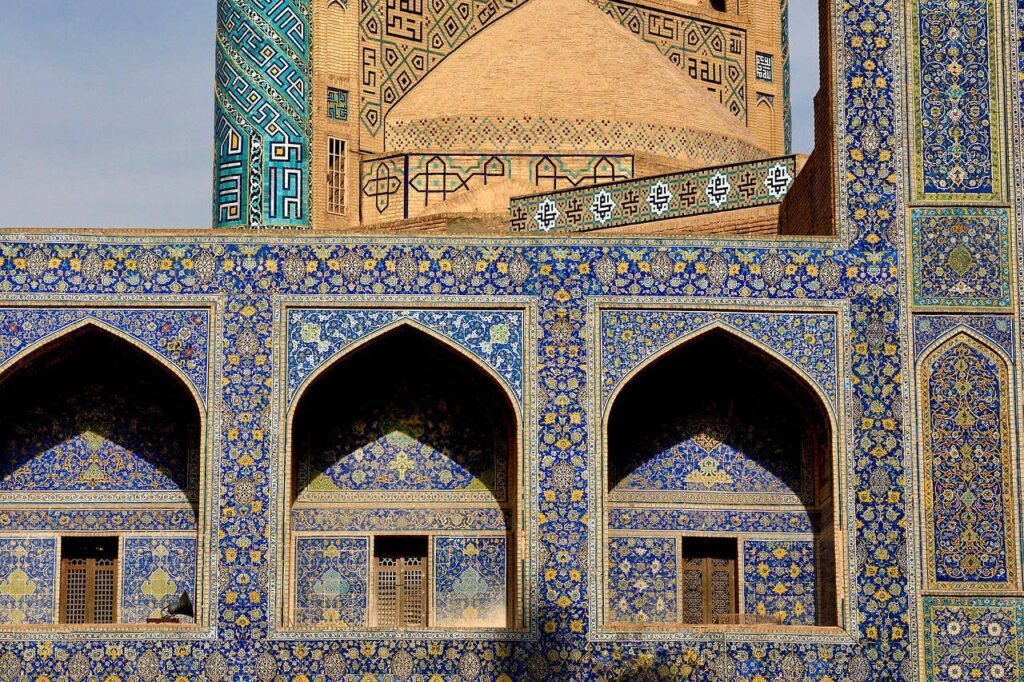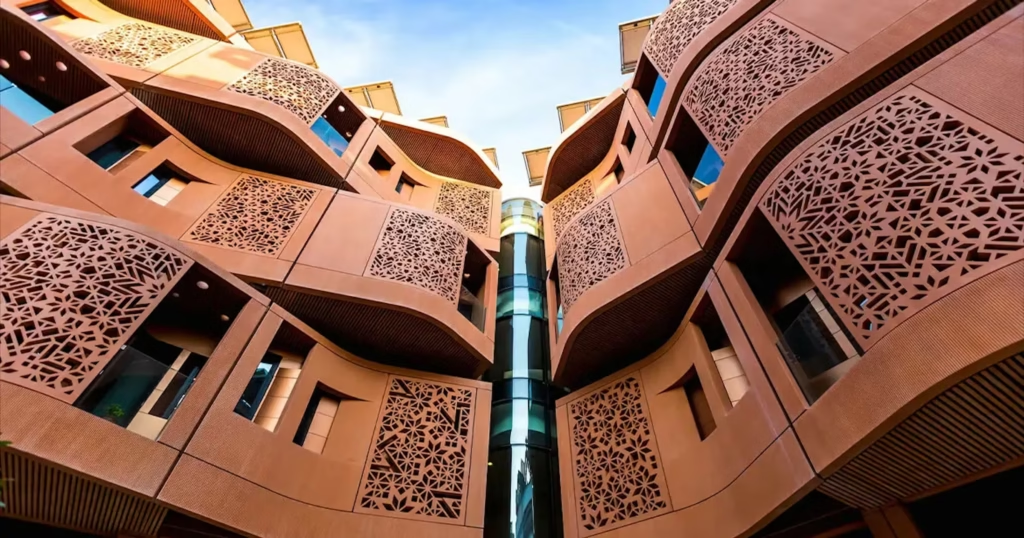The United Arab Emirates is known around the world for its modern buildings, stunning skylines, and futuristic designs. But if you look closely, you’ll find that even the most modern buildings often carry signs of the country’s deep-rooted culture and traditions. Architecture in the UAE is more than just design – it’s a reflection of Emirati life, history, and values.
From traditional desert homes to high-rise towers in Dubai and Abu Dhabi, every structure tells a story. In the heart of this fast-growing nation, the past and the future meet through thoughtful and symbolic design.
Traditional Homes: Built for Climate and Community
Before the rise of skyscrapers and malls, Emiratis lived in homes made from materials found in their environment. Palm fronds, coral stones, and mud were commonly used. These materials were not only available but perfect for the desert’s hot and dry weather.

Barasti huts, for example, were simple homes made of palm leaves. They were airy and allowed wind to pass through, keeping them cool in the summer. In coastal areas, coral stone houses were more popular. These were stronger and lasted longer.

Many of these homes had open courtyards in the middle. This allowed for air circulation and created a space where families could gather privately. Emirati homes also had separate spaces for men and women, reflecting the cultural value placed on privacy.
Even today, you can see modern villas inspired by this layout. Many have central courtyards, high walls, and design elements that provide privacy and comfort — all deeply tied to tradition.
Wind Towers: The Smart Cooling System
Long before air conditioners became common, Emiratis used wind towers — known locally as barjeel — to cool their homes. These tall, rectangular structures caught wind from above and directed it into the rooms below. They also let hot air escape, acting like a natural fan.
Wind towers are one of the most iconic features of Emirati architecture. Today, they are often included in modern buildings as a nod to the past. In places like Al Fahidi Historical District in Dubai, you can still see original wind towers standing strong, reminding visitors of the UAE’s smart and sustainable roots.
Mosques: A Blend of Faith and Beauty
Mosques are an important part of Emirati culture, not only as places of worship but as symbols of beauty and unity. Traditional mosque architecture includes domes, minarets, and arches, often decorated with calligraphy and geometric patterns.
The Sheikh Zayed Grand Mosque in Abu Dhabi is one of the world’s most stunning examples. While it’s a modern building, it reflects traditional Islamic and Emirati styles. The white marble, floral designs, and large open courtyards all come from classical inspirations.
Each mosque, whether big or small, is carefully designed to offer peace, comfort, and connection — all key parts of Emirati life.
Modern Towers With Cultural Touches
The UAE’s cities are filled with skyscrapers and luxury buildings, but many of them still include elements of traditional design. The Burj Khalifa, for example, may be the tallest building in the world, but its shape is inspired by the Hymenocallis flower, which grows in the region. The structure also mimics the design of traditional Islamic patterns.
Other towers in the UAE, such as the Burj Al Arab or the Etihad Towers, also borrow elements from Emirati heritage. These include curved shapes like waves or sails, reflecting the country’s strong link to the sea.
By mixing the old with the new, these buildings show how Emiratis respect their past while dreaming big about the future.

Sustainability Inspired by the Past
In recent years, the UAE has focused more on green and sustainable architecture. Interestingly, many of these new ideas go back to traditional methods. Buildings are being designed to use natural light, promote airflow, and reduce energy – just like homes in the past did.
Masdar City in Abu Dhabi is a great example. It’s a modern eco-city, but its design is inspired by ancient Arabian cities. Narrow streets, wind towers, and shaded areas help keep temperatures down without using too much electricity.
This approach proves that traditional Emirati architecture was not only beautiful but also smart and environmentally friendly.
Cultural Centers and Museums: Telling Stories Through Design
Cultural buildings in the UAE are carefully designed to reflect identity and pride. The Louvre Abu Dhabi, for example, combines modern architecture with Emirati values. Its dome, made up of thousands of stars, lets in filtered sunlight, creating a “rain of light” effect — much like how palm trees would create shade in a traditional courtyard.
Similarly, the Qasr Al Watan (Presidential Palace) celebrates Arab heritage with its stunning white facade, intricate carvings, and giant domes. These buildings don’t just serve a purpose; they also teach visitors about the nation’s culture through design.
Preserving Heritage While Moving Forward
As the UAE continues to grow, it remains deeply connected to its roots. Cities like Sharjah and Al Ain are working hard to preserve traditional homes, forts, and markets. These places remind the younger generation of how life used to be — and why it still matters today.
Architects in the UAE are now finding creative ways to blend old and new. By including traditional patterns, materials, and layouts in their designs, they’re making sure that Emirati culture remains a living part of the country’s future.
Final Thoughts
In the UAE, architecture is not just about buildings. It’s about identity, tradition, and vision. Every home, mosque, tower, and museum speaks of a people who love their land and respect their past — even as they reach for the stars.
Through design, Emiratis are telling the world who they are and where they come from. And that story continues to grow, one brick at a time.
Also read: Ras Al Khaimah Gears Up for an Exciting Summer Festival













